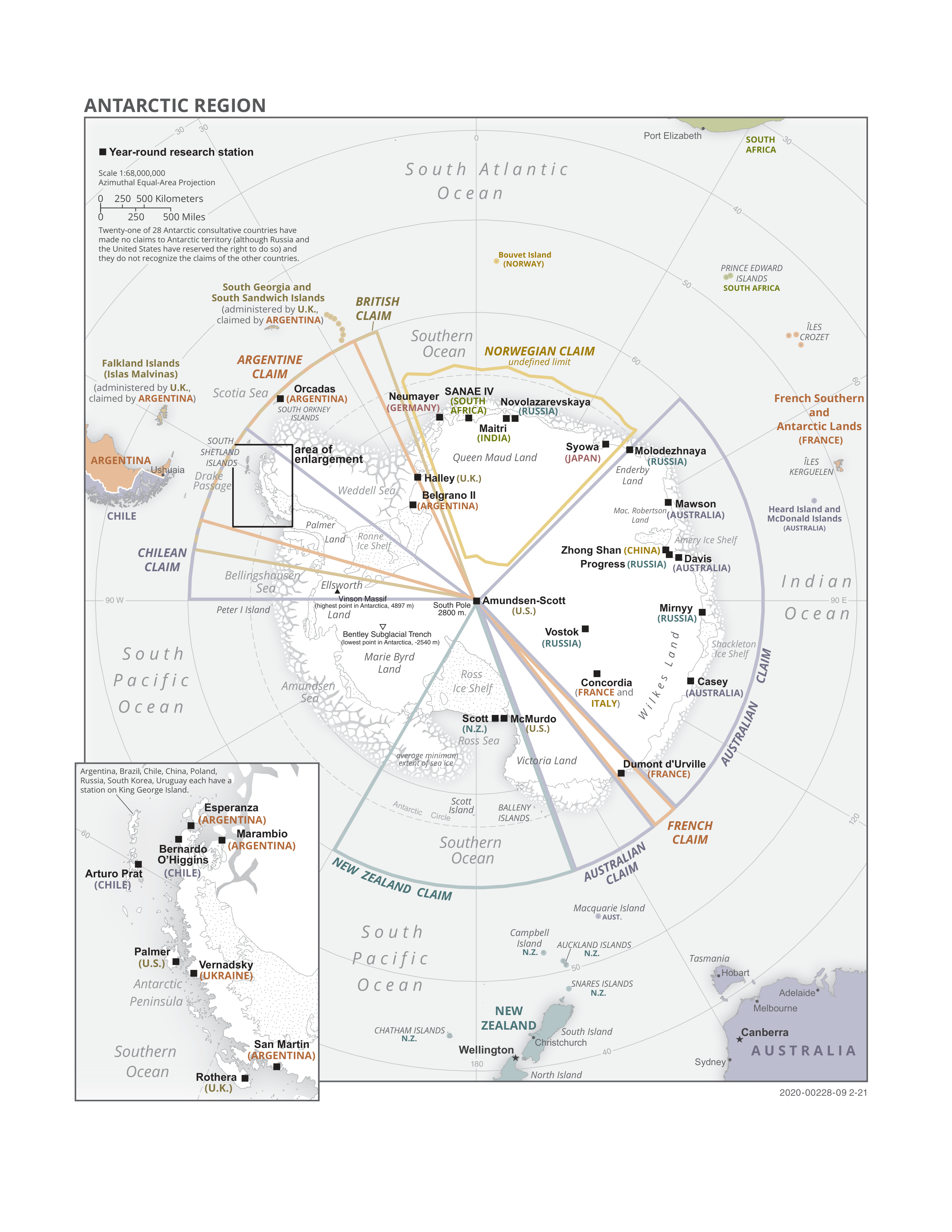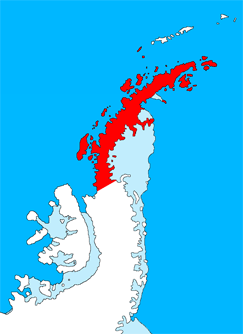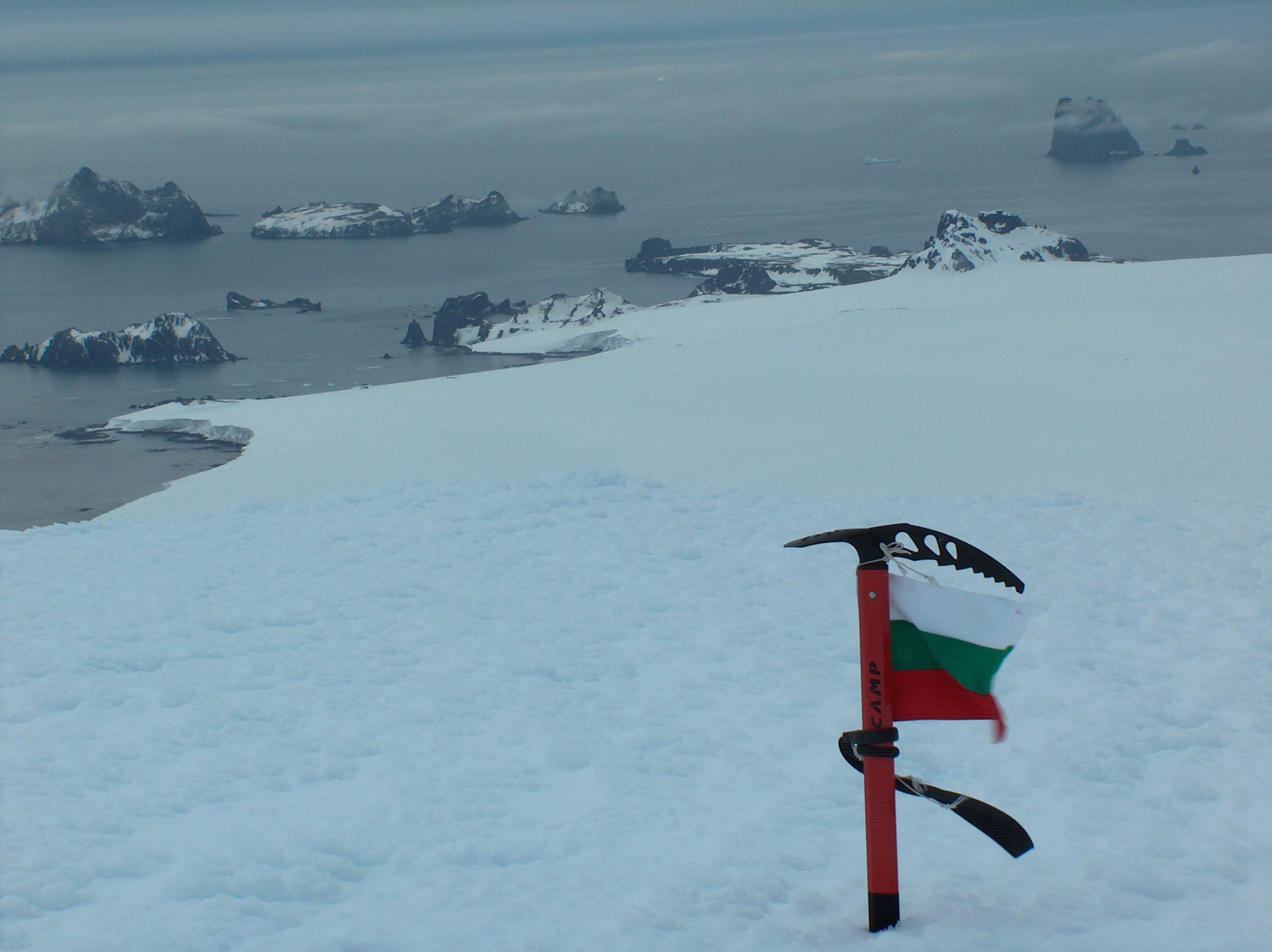|
Bennett Islands
The Bennett Islands are a group of islands at the southwest side of Liard Island in Hanusse Bay, extending in a southwest direction for off the west coast of Graham Land. The islands were sighted and sketched from the air in February 1937 by the British Graham Land Expedition under John Rymill. They were named in 1954 by the UK Antarctic Place-Names Committee for Arthur G. Bennett, British representative on whaling in the South Shetland Islands and South Orkney Islands for many years between 1913 and 1927, and acting government naturalist in the Falkland Islands, 1924–38. See also * List of Antarctic and sub-Antarctic islands This is a list of Antarctic and sub-Antarctic islands. * Antarctic islands are, in the strict sense, the islands around mainland Antarctica, situated on the Antarctic Plate, and south of the Antarctic Convergence. According to the terms of the ... References * Islands of Graham Land Loubet Coast {{LoubetCoast-geo-stub ... [...More Info...] [...Related Items...] OR: [Wikipedia] [Google] [Baidu] |
Antarctica
Antarctica () is Earth's southernmost and least-populated continent. Situated almost entirely south of the Antarctic Circle and surrounded by the Southern Ocean (also known as the Antarctic Ocean), it contains the geographic South Pole. Antarctica is the fifth-largest continent, being about 40% larger than Europe, and has an area of . Most of Antarctica is covered by the Antarctic ice sheet, with an average thickness of . Antarctica is, on average, the coldest, driest, and windiest of the continents, and it has the highest average elevation. It is mainly a polar desert, with annual Climate of Antarctica#Precipitation, precipitation of over along the coast and far less inland. About 70% of the world's freshwater reserves are frozen in Antarctica, which, if melted, would raise global sea levels by almost . Antarctica holds the record for the Lowest temperature recorded on Earth, lowest measured temperature on Earth, . The coastal regions can reach temperatures over in the ... [...More Info...] [...Related Items...] OR: [Wikipedia] [Google] [Baidu] |
Antarctic Treaty System
The Antarctic Treaty and related agreements, collectively known as the Antarctic Treaty System (ATS), regulate international relations with respect to Antarctica, Earth's only continent without a native human population. It was the first arms control agreement established during the Cold War, designating the continent as a scientific preserve, establishing freedom of scientific investigation, and banning Military activity in the Antarctic, military activity; for the purposes of the treaty system, Antarctica is defined as all the land and ice shelf, ice shelves south of 60th parallel south, 60°S latitude. Since September 2004, the Antarctic Treaty Secretariat, which implements the treaty system, is headquartered in Buenos Aires, Argentina. The main treaty was opened for signature on 1 December 1959, and officially coming into force, entered into force on 23 June 1961. The original signatories were the 12 countries active in Antarctica during the International Geophysical Year ... [...More Info...] [...Related Items...] OR: [Wikipedia] [Google] [Baidu] |
Liard Island
Liard Island is a mountainous island, long, wide and rising to , situated in the north-central portion of Hanusse Bay, off the west coast of Graham Land, Antarctica. It was discovered and named by the French Antarctic Expedition, 1908–10, under Jean-Baptiste Charcot. See also * Composite Antarctic Gazetteer * Glen Peak * List of Antarctic islands south of 60° S * Mount Bridgman * Scientific Committee on Antarctic Research * Territorial claims in Antarctica Seven sovereign states – Argentina, Australia, Chile, France, New Zealand, Norway, and the United Kingdom – have made eight land claim, territorial claims in Antarctica. These countries have tended to place their Antarctic scientific observat ... References Islands of Graham Land Loubet Coast {{LoubetCoast-geo-stub ... [...More Info...] [...Related Items...] OR: [Wikipedia] [Google] [Baidu] |
Hanusse Bay
Hanusse Bay is a broad, V-shaped bay, off the west coast of Graham Land, Antarctica. The bay is long and trends generally north–south. It is bordered by Cape Mascart on Anvers Island, and Shmidt Point on Arrowsmith Peninsula, Loubet Coast. At its north entrance, Isacke Passage separates it from Liard Island. It is bounded to the south by a line from Landauer Point, the north point of Hansen Island and Bagnold Point on Arrowsmith Peninsula. The bay was discovered and first charted by the French Antarctic Expedition, 1908–10, under Jean-Baptiste Charcot, and named by him for the director of the Hydrographic Service of the French Navy Ferdinand Isidore Hanusse (1848–1921). Isacke Passage was also charted Charcot's expedition. It was named by the UK Antarctic Place-Names Committee for Captain Christopher J. Isacke, Royal Navy, commanding officer of HMS ''Endurance'' in the Antarctic Peninsula The Antarctic Peninsula, known as O'Higgins Land in Chile and Tierra de San Mar ... [...More Info...] [...Related Items...] OR: [Wikipedia] [Google] [Baidu] |
Graham Land
Graham Land is the portion of the Antarctic Peninsula that lies north of a line joining Cape Jeremy and Cape Agassiz. This description of Graham Land is consistent with the 1964 agreement between the British Antarctic Place-names Committee and the US Advisory Committee on Antarctic Names, in which the name "Antarctic Peninsula" was approved for the major peninsula of Antarctica, and the names Graham Land and Palmer Land for the northern and southern portions, respectively. The line dividing them is roughly 69 degrees south. Graham Land is named after Sir James R. G. Graham, First Lord of the Admiralty at the time of John Biscoe's exploration of the west side of Graham Land in 1832. It is claimed by Argentina (as part of Argentine Antarctica), Britain (as part of the British Antarctic Territory) and Chile (as part of the Chilean Antarctic Territory). Graham Land is the closest part of Antarctica to South America. Thus it is the usual destination for small ships takin ... [...More Info...] [...Related Items...] OR: [Wikipedia] [Google] [Baidu] |
John Rymill
John Riddoch Rymill (13 March 1905 – 7 September 1968) was an Australian polar explorer, who had the rare second clasp added to his Polar Medal. Early life Rymill was born at Penola, South Australia, the second son of Robert Rymill (7 July 1869 – 14 May 1906) and Mary Edith Rymill (née Riddoch), owners of Penola Station, and grandson of Frank Rymill. He was educated at Melbourne Grammar School, where he first developed his love of polar literature, and at the Royal Geographical Society in London, where he studied surveying and navigation. Polar career Rymill prepared himself for polar exploration with alpine experience in Europe, flying lessons at the de Havilland Aircraft Co. Ltd, Hendon and courses at the Scott Polar Research Institute, Cambridge, under Professor Frank Debenham. In 1931 he was appointed to the British Arctic Air Route Expedition to Greenland (1930–31) as surveyor and pilot. He also joined the subsequent 1932-33 East Greenland Expedition l ... [...More Info...] [...Related Items...] OR: [Wikipedia] [Google] [Baidu] |
UK Antarctic Place-Names Committee
The UK Antarctic Place-Names Committee (or UK-APC) is a United Kingdom government committee, part of the Foreign and Commonwealth Office, responsible for recommending names of geographical locations within the British Antarctic Territory (BAT) and the South Georgia and the South Sandwich Islands (SGSSI). Such names are formally approved by the Commissioners of the BAT and SGSSI respectively and published in the BAT Gazetteer and the SGSSI Gazetteer maintained by the Committee. The BAT names are also published in the international Composite Gazetteer of Antarctica maintained by SCAR. The Committee may also consider proposals for new place names for geographical features in areas of Antarctica outside BAT and SGSSI, which are referred to other Antarctic place-naming authorities or decided by the Committee itself if situated in the unclaimed sector of Antarctica. Names attributed by the committee * Anvil Crag, named for descriptive features * Anckorn Nunataks, named after J. F ... [...More Info...] [...Related Items...] OR: [Wikipedia] [Google] [Baidu] |
Arthur G
Arthur is a masculine given name of uncertain etymology. Its popularity derives from it being the name of the legendary hero King Arthur. A common spelling variant used in many Slavic, Romance, and Germanic languages is Artur. In Spanish and Italian it is Arturo. Etymology The earliest attestation of the name Arthur is in the early 9th century Welsh-Latin text ''Historia Brittonum'', where it refers to a circa 5th century Romano-British general who fought against the invading Saxons, and who later gave rise to the famous King Arthur of medieval legend and literature. A possible earlier mention of the same man is to be found in the epic Welsh poem '' Y Gododdin'' by Aneirin, which some scholars assign to the late 6th century, though this is still a matter of debate and the poem only survives in a late 13th century manuscript entitled the Book of Aneirin. A 9th-century Breton landowner named Arthur witnessed several charters collected in the '' Cartulary of Redon''. The Irish bo ... [...More Info...] [...Related Items...] OR: [Wikipedia] [Google] [Baidu] |
South Shetland Islands
The South Shetland Islands are a group of List of Antarctic and subantarctic islands, Antarctic islands located in the Drake Passage with a total area of . They lie about north of the Antarctic Peninsula, and between southwest of the nearest point of the South Orkney Islands. By the Antarctic Treaty System, Antarctic Treaty of 1959, the islands' sovereignty is neither recognized nor disputed by the signatories. According to British government language on the topic, "the whole of Antarctica is protected in the interests of peace and science." The islands have been claimed by three countries, beginning with the United Kingdom since 1908 (since 1962 as part of the equally unrecognized British Antarctic Territory). The islands are also claimed by the governments of Chile (since 1940, as part of the Antártica Chilena province), and by Argentina (since 1943, as part of Argentine Antarctica, Tierra del Fuego Province, Argentina, Tierra del Fuego Province). Several countries ... [...More Info...] [...Related Items...] OR: [Wikipedia] [Google] [Baidu] |
South Orkney Islands
The South Orkney Islands are a group of List of Antarctic and sub-Antarctic islands, islands in the Southern Ocean, about north-east of the tip of the Antarctic Peninsula''Antarctica: Secrets of the Southern Continent'' p. 122 , David McGonigal, 2009 and south-west of South Georgia Island. They have a total area of about . The islands are claimed both by Britain (as part of the British Antarctic Territory since 1962, previously as a Falkland Islands Dependencies, Falkland Islands Dependency) and by Argentina (as part of Argentine Antarctica). Under the 1959 Antarctic Treaty, sovereignty claims are held in abeyance. Britain and Argentina both maintain bases on the islands. The Argentine base, Orcadas Base, Orcadas, established in 1904, is sited on Laurie Island. The 11 buildings ... [...More Info...] [...Related Items...] OR: [Wikipedia] [Google] [Baidu] |
Falkland Islands
The Falkland Islands (; ), commonly referred to as The Falklands, is an archipelago in the South Atlantic Ocean on the Patagonian Shelf. The principal islands are about east of South America's southern Patagonian coast and from Cape Dubouzet at the northern tip of the Antarctic Peninsula, at a latitude of about 52°S. The archipelago, with an area of , comprises East Falkland, West Falkland, and 776 smaller islands. As a British Overseas Territory, the Falklands have internal self-governance, while the United Kingdom takes responsibility for their defence and foreign affairs. The capital and largest settlement is Stanley, Falkland Islands, Stanley on East Falkland. The islands are believed to have been uninhabited prior to European discovery in the 17th century. Controversy exists over the Falklands' discovery and subsequent colonisation by Europeans. At various times, the islands have had French, British, Spanish, and Argentine settlements. Britain Reassertion of Britis ... [...More Info...] [...Related Items...] OR: [Wikipedia] [Google] [Baidu] |






